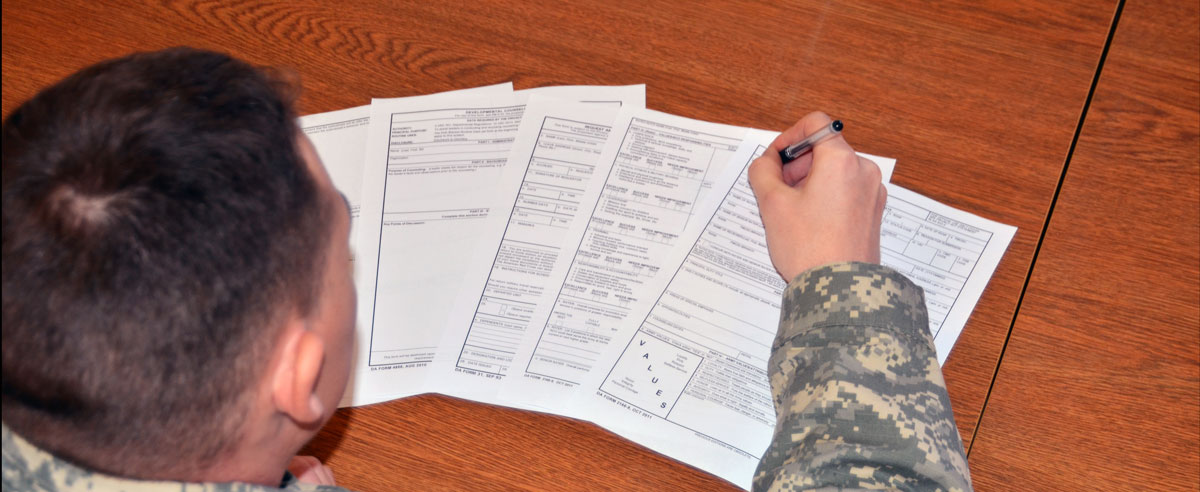Navy Paperwork: Serving Copies Simplified Guide

One of the fundamental aspects of serving in the Navy is understanding and managing the abundance of paperwork. From administrative records to operational orders, proper documentation ensures that the vast machine of naval operations runs smoothly. Serving copies of important documents, whether for personal records or official submissions, is a skill that can streamline your service life and reduce stress.
Understanding the Importance of Documentation

Documentation in the Navy is not just about filling out forms; it’s about providing clarity, accountability, and an unbroken chain of command in decision-making. Here’s why effective document management is crucial:
- Communication: Ensures that orders and directives are properly conveyed.
- Record Keeping: Maintains accurate and up-to-date records for audits and future references.
- Legal Compliance: Helps adhere to Navy regulations and laws.
- Efficiency: Reduces the time and resources wasted on miscommunication or lost documents.
Types of Documents You Might Need to Serve

The types of documents you might need to serve copies for in the Navy include, but are not limited to:
- Navy Instructions (NAVINST)
- Operational Orders
- Promotion and Advancement Documentation
- Leave Requests
- Travel Reimbursements and Vouchers
- Medical Records
- Security Clearance Forms
- Training and Qualification Records
Steps for Serving Copies of Documents

Serving copies effectively involves a set of systematic steps:
Prepare the Documents

Make sure all documents are complete, signed, and in proper order. Check for any attachments or appendices that need to be included.
Know Your Audience

Understand who needs to receive copies of the document and in what format. Some documents might require original signatures, while others can be served electronically.
Copy and Digitize

If serving multiple copies, make photocopies or scan the documents for digital distribution. Keep in mind that some documents might need to be hand-carried or hand-delivered for security reasons.
Label and Package

Clearly label each copy with the document title, date, and recipient’s name or department. Package them securely for transport or delivery.
Serve and Confirm Receipt

Deliver or send copies as per the protocol, whether through internal mail systems, courier services, or email. Ensure confirmation of receipt is obtained, which can be done via signed receipt or digital confirmation.
Record Keeping

Keep a record of all copies served, including the date served, recipient’s name, and the method of delivery. This log can be invaluable for tracking and accountability.
📋 Note: Ensure all sensitive information, particularly in relation to security clearances or medical records, is handled in compliance with privacy regulations.
Best Practices for Electronic Document Serving

With technology playing an ever-increasing role in document management:
- Use Secure Communication Channels: Use encrypted emails or Navy-approved document management systems to ensure secure transmission.
- Digital Signatures: Implement digital signatures when possible to authenticate documents.
- Version Control: Keep track of document versions to ensure all parties are working with the most current copy.
- Regular Backups: Back up digital copies of served documents to prevent data loss.
Navigating Bureaucratic Challenges

Serving copies in a military bureaucracy can come with its unique set of challenges:
- Paperwork Overload: Deal with overwhelming amounts of paperwork by prioritizing tasks and using digital tools to manage document flow.
- Chain of Command Issues: Understand and respect the chain of command when serving documents, ensuring proper protocol is followed to avoid misunderstandings or delays.
- Time Sensitivity: Some documents, especially operational orders, require immediate action. Use expedited services or direct communication to ensure timely delivery.
- Archival and Retention: Be aware of document retention policies, which dictate how long you should keep copies of served documents for official records.
In summary, serving copies in the Navy is an integral part of your duties that ensures the efficient operation of the service. By understanding the significance of documentation, preparing documents correctly, using secure and efficient delivery methods, and maintaining records, you contribute to the seamless functioning of the naval forces. Your attention to detail, respect for procedure, and adaptability to new technologies will go a long way in simplifying this complex yet crucial task.
What should I do if I receive a document with errors?

+
If you receive a document with errors, notify the originator immediately. Request corrections and serve the updated version once received, ensuring to keep records of all versions for tracking purposes.
Can I serve documents via email to maintain records?

+
Yes, serving documents via email is common, especially for internal communications. Use official Navy email systems and follow up to confirm receipt and acknowledgment.
What is the protocol for serving classified documents?

+
Classified documents require stringent protocols. They must be hand-delivered or served through secure, encrypted channels, ensuring only those with appropriate clearance levels receive them. Additionally, follow security regulations regarding copying, disposal, and storage of such documents.



